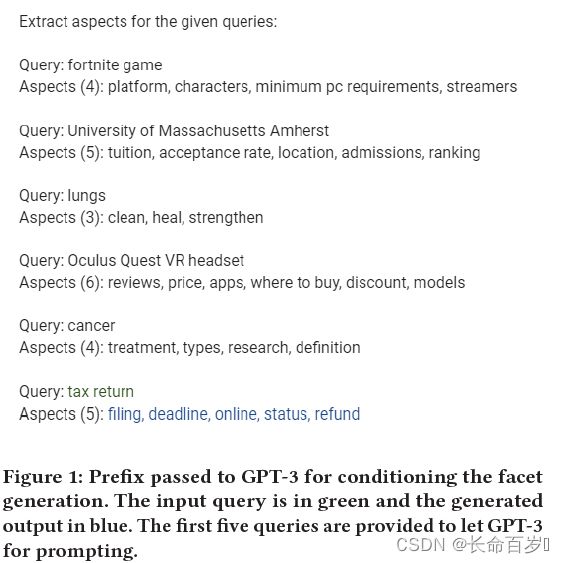- 大模型GUI系列论文阅读 DAY2续2:《使用指令微调基础模型的多模态网页导航》
feifeikon
论文阅读
摘要自主网页导航的进展一直受到以下因素的阻碍:依赖于数十亿次的探索性交互(通常采用在线强化学习),依赖于特定领域的模型设计,难以利用丰富的跨领域数据进行泛化。在本研究中,我们探讨了基于视觉-语言基础模型的数据驱动离线训练方法,以改进网页代理的性能。我们提出了一种名为WebGUM的指令跟随多模态代理,该代理能够同时观察网页截图和HTML页面,并输出网页导航操作,例如点击和输入文本等。WebGUM通过
- 大模型GUI系列论文阅读 DAY3:《GPT-4V(ision) is a Generalist Web Agent, if Grounded》
feifeikon
论文阅读
摘要近年来,大型多模态模型(LMMs)的发展,特别是GPT-4V(ision)和Gemini,迅速扩展了多模态模型的能力边界,不再局限于传统任务如图像描述和视觉问答。在本研究中,我们探讨了LMMs(如GPT-4V)作为通用网页代理的潜力,这类代理能够根据自然语言指令完成任意网站上的任务。我们提出了SEEACT,这是一种通用网页代理,利用LMMs的视觉理解能力,实现网页上的操作。我们在最新的MIND
- 深度求索DeepSeek V2.5-1210发布:强大的AI代码生成器,开启联网搜索新纪元
前端
深度求索团队近日发布了AI代码生成器DeepSeekV2.5系列的最终版本——DeepSeekV2.5-1210,并正式上线了备受期待的联网搜索功能。这标志着DeepSeekV2系列发展历程的一个重要里程碑,也为AI大模型在代码生成和信息检索领域树立了新的标杆。此次更新不仅带来了模型能力的全面提升,更重要的是开启了AI与实时信息互联的新篇章。DeepSeekV2.5-1210的核心改进:Post-
- 使用Chaindesk与大语言模型集成的实战指南
srudfktuffk
语言模型人工智能自然语言处理python
技术背景介绍在现代AI应用中,快速有效地从大量数据中获取相关信息是至关重要的。Chaindesk是一款开源的文档检索平台,旨在将您的个人数据与大型语言模型(LLM)连接起来,实现高效的信息检索和应用集成。核心原理解析Chaindesk通过创建"数据存储"(datastore)来管理和索引数据,利用检索器(Retriever)进行高效查询。这使得用户能够在私有数据的基础上构建智能应用,而无需担心数据
- 《论文阅读》 用于产生移情反应的迭代联想记忆模型 ACL2024
365JHWZGo
情感对话论文阅读回复生成ACL2024共情回复empathetic
《论文阅读》用于产生移情反应的迭代联想记忆模型ACL2024前言简介任务定义模型架构EncodingDialogueInformationCapturingAssociatedInformationPredictingEmotionandGeneratingResponse损失函数问题前言亲身阅读感受分享,细节画图解释,再也不用担心看不懂论文啦~无抄袭,无复制,纯手工敲击键盘~今天为大家带来的是《
- 论文阅读--Qwen2&2.5技术报告
__如果
论文阅读qwen
Qwen21引言所有模型都是在超过7trilliontoken(7万亿)的高质量、大规模数据集上预训练的2Tokenizer&Model2.1Tokenizer沿用Qwen(Bai等人,2023a)的做法,我们采用了基于字节级字节对编码的相同Tokenizer所有大小的模型都采用一个共有词汇表,包含151,643个常规词元和3个控制词元2.2模型架构基于Transformer架构的大型语言模型,具
- 大模型GUI系列论文阅读 DAY3续4:《TREE SEARCH FOR LANGUAGE MODEL AGENTS》
feifeikon
语言模型人工智能自然语言处理
摘要自主代理由语言模型(LMs)驱动,已在执行诸如网页自动化等决策任务方面展示出良好前景。然而,语言模型的一个主要局限在于:它们主要针对自然语言理解和生成进行了优化,在解决现实世界的计算机任务时,难以应对多步推理、规划以及环境反馈的利用。为了解决这一问题,我们提出了一种推理时搜索算法,使语言模型代理能够在交互式网页环境中执行显式的探索和多步规划。我们的方法是一种基于最佳优先(best-first)
- 使用 GPT-crawler 构建 RAG 应用的完整指南
sagvWSRJHMNEB
gpt爬虫人工智能python
随着生成式AI技术的迅猛发展,如何高效地利用GPT模型进行信息抽取和知识增强(RAG:Retrieval-AugmentedGeneration)成为了开发者关注的焦点。本文将深入探讨如何使用gpt-crawler工具来抓取网页内容并在LangChain项目中实现RAG应用。技术背景介绍在生成式AI应用中,RAG是一种结合信息检索和生成技术的方法。通过将外部知识融入到生成模型中,RAG能够在特定领
- 构建基于PDF文档的问答系统:使用Python和LangChain实现高效文档处理与信息检索
m0_57781768
pythonpdflangchain
构建基于PDF文档的问答系统:使用Python和LangChain实现高效文档处理与信息检索引言在现代信息化社会中,PDF文件是保存和传播重要信息的常用格式。这些文件中往往包含丰富的非结构化数据,如企业报告、研究论文和政府文件等。然而,由于其格式和内容的复杂性,直接使用传统的文本处理工具处理PDF文件存在一定困难。为了解决这一问题,本文将详细介绍如何利用Python和LangChain库,构建一个
- 使用RAG-Chroma与OpenAI构建高效问答系统
srudfktuffk
人工智能python
在AI驱动的应用场景中,检索增强生成(Retrieval-AugmentedGeneration,RAG)是一种强大的技术,可以提升问答系统的精度和效能。在这篇文章中,我们将深入探讨如何使用Chroma与OpenAI结合,构建一个基于RAG的问答系统。技术背景介绍RAG是一种结合信息检索(IR)和自然语言生成(NLG)的技术。它通过先检索与问题相关的信息,然后生成答案,提高了问答系统的准确性和相关
- 利用Ollama和OpenAI实现多查询RAG检索
jkgSFS
前端javascript开发语言python
在这篇文章中,我们将探讨如何结合使用Ollama和OpenAI的多查询检索技术(RAG)来增强信息检索的准确性和效率。多查询检索器是一种查询转换的例子,它基于用户的输入查询生成多个不同视角的查询。对于每个查询,系统检索一组相关文档,并合并所有查询的独特联合体以进行答案合成。技术背景介绍RAG(Retrieval-AugmentedGeneration)是一种结合检索与生成的技术,它通过在生成答案之
- DETRs with Collaborative Hybrid Assignments Training论文阅读与代码
分享总结快乐
论文阅读
关键词:协作混合分配训练【目标检测】Co-DETR:ATSS+FasterRCNN+DETR协作的先进检测器(ICCV2023)-CSDN博客摘要:在这篇论文中,作者观察到在DETR中将过少的Query分配为正样本,采用一对一的集合匹配,会导致对编码器输出的监督稀疏,严重损害编码器的区分特征学习,反之亦然,也会影响解码器中的注意力学习。为了缓解这个问题,作者提出了一种新颖的协同混合分配训练方案,名
- 大模型GUI系列论文阅读 DAY2续:《一个具备规划、长上下文理解和程序合成能力的真实世界Web代理》
feifeikon
论文阅读
摘要预训练的大语言模型(LLMs)近年来在自主网页自动化方面实现了更好的泛化能力和样本效率。然而,在真实世界的网站上,其性能仍然受到以下问题的影响:(1)开放领域的复杂性,(2)有限的上下文长度,(3)在HTML结构上的归纳偏差不足。我们提出WebAgent,一个由LLM驱动的智能代理,能够通过自我学习的方式,在真实网站上按照自然语言指令完成任务。WebAgent通过将指令提前规划,将其分解为子指
- 如何基于SpringBoot和PostGIS的各国及所属机场信息检索实现机场的可视化实现
用心去追梦
springboot后端java
基于SpringBoot和PostGIS实现各国及所属机场信息检索,并进行机场的可视化展示,可以按照以下步骤来进行:1.环境准备安装PostGIS确保你的数据库服务器已安装PostgreSQL。安装PostGIS扩展来支持地理空间数据类型和函数。CREATEEXTENSIONpostgis;设置SpringBoot项目使用SpringInitializr创建一个新的SpringBoot项目,选择W
- ELK Stack学习笔记
在线打码
学习笔记redislinuxcentoseselk
一、ELKStack简介1、Elasticsearch一个实时的分布式搜索和分析引擎,它可以用于全文搜索,结构化搜索以及分析。它是一个建立在全文搜索引擎ApacheLucene(信息检索的工具jar包)基础上的搜索引擎,使用Java语言编写2、Logstash一个完全开源的工具,可以对日志进行收集、过滤,并将其存储供以后使用。是开源的服务器端数据处理管道,能够从多个来源收集数据、转换数据。并保存到
- 多查询分析中的并发处理实践
FADxafs
python
在进行查询分析时,某些技术可能会生成多个查询。在这种情况下,我们需要记得执行所有查询并合并结果。本文将通过一个简单的示例(使用模拟数据)展示如何实现这一点。技术背景介绍在数据分析和信息检索领域,查询分析技术能够帮助我们生成和优化查询以提高搜索效率。然而,当同时生成多个查询时,处理这些查询并有效地合并结果就显得尤为重要。本次我们将使用langchain库来演示如何处理多查询情况。核心原理解析通过生成
- 论文阅读笔记:AI+RPA
几道之旅
人工智能
文章目录论文题目下载地址论文摘要论文题目Challengesandopportunities:ImplementingRPAandAIinfrauddetectioninthebankingsector下载地址点击这里下载论文摘要在银行业中,将机器人流程自动化(RPA)和人工智能(AI)集成用于欺诈检测是一项重大变革,既带来了挑战,也带来了机遇。随着金融机构面临日益复杂的欺诈企图,RPA和AI成为
- 大模型的RAG微调与Agent:提升智能代理的效率与效果
WeeJot
人工智能人工智能
目录编辑引言RAG模型概述检索阶段生成阶段RAG模型的微调数据集选择损失函数设计微调策略超参数调整RAG模型在智能代理中的应用客户服务信息检索内容创作决策支持:结论引言在人工智能的快速发展中,大型预训练模型(LLMs)已经成为推动技术进步的关键力量。这些模型通过在海量数据上的预训练,掌握了丰富的语言知识和模式识别能力,从而在多种自然语言处理任务上展现出卓越的性能。然而,预训练模型的通用性也意味着它
- 论文阅读:Deep Bilateral Learning for Real-Time Image Enhancement-google-hdrnet-slicing
SetMaker
论文阅读
项目地址:https://gitcode.com/google/hdrnethdrnet作为超分领域的经典文章,由google提出主要用来用轻量化的方法来实现高分辨率的图像生成,hdrnet结合cnn可以让更高分辨率的图像部署在板端。如图所示,原始图像比如4k图像,首先分为两个主要模块:grid和guide。grid就是对应图上面的那一条特征提取网络,具体来说,原始图像经过下采样之后,默认256分
- 基于Spring Boot和Vue的人脸识别项目(源码)
AI人H哥会Java
JAVA大作业项目实战springbootvue.jsjava人工智能计算机视觉后端sql
背景随着人工智能技术的迅猛发展,生物识别技术的迅猛发展,人脸识别已经成为最具潜力的人工智能应用之一。它不仅在安全监控、金融支付、智能家居等多个领域得到了广泛应用,也逐渐进入日常生活场景。人脸识别作为一种生物特征识别技术,能够通过分析人脸图像中的特征点,实现对个体的身份识别。利用计算机视觉技术,系统能够快速从大量图片中定位并识别特定人脸,实现身份验证和信息检索。这一技术的应用,不仅提高了安全性,还提
- 知识图谱语义搜索:构建智能化搜索未来
cooldream2009
AI技术知识图谱知识图谱人工智能
目录前言1.知识图谱语义搜索的基础概念1.1什么是知识图谱1.2什么是语义搜索1.3知识图谱语义搜索的结合2.知识图谱语义搜索的核心技术2.1自然语言处理技术2.2知识图谱构建与管理2.3图数据库与查询技术3.知识图谱语义搜索的应用场景3.1智能问答系统3.2个性化推荐3.3专业领域信息检索4.知识图谱语义搜索的未来展望4.1技术挑战4.2应用趋势结语前言随着信息技术的飞速发展,数据量呈现爆炸式增
- PenGymy论文阅读
亚里士多没有德775
论文阅读
这里发现idea被人家先发了,没办法,资料收集的不够全面,现在来学习一下这个项目这篇论文的贡献如下:总的来说,他的主要工作是构建逼真的仿真环境,然后根据这个仿真环境生成真实的靶场,使得这个智能体能够在这个真实的环境去互动。下面来逐渐解析他的工作,我尽量详细一点1、背景和动机这种项目是在网络攻防中,攻防双方攻击者处于暗面,防御者处于明面,这时候受到攻击后应急处理多少会造成损失,那么要是可以提前预测攻
- Vue项目引入侧边导航栏
byg_qlh
vuevue.js前端javascript
Vue项目引入侧边导航栏侧边导航栏能够非常方便进行信息检索,这一款不错的侧边导航栏:vue-side-catalog,基本上能满足快速检索的需求安装官网首先需要进入**vue-side-catalog**的官网,然后下载对应的源码,下载完成后,使用一下命令进行项目启动(https://github.com/yaowei9363/vue-side-catalog)#安装依赖npminstall#启动
- 日期和时间数据类型的深入探讨:理论与实践
title:日期和时间数据类型的深入探讨:理论与实践date:2025/1/3updated:2025/1/3author:cmdragonexcerpt:日期和时间数据类型在数据库管理系统中扮演着重要角色,尤其是在数据分析、时间序列数据和事件追踪等领域。这些数据类型不仅可以准确表示时间信息,还能在信息检索、数据存储和计算功能上发挥重要作用。categories:前端开发tags:日期和时间数据库
- 深入理解 MultiQueryRetriever:提升向量数据库检索效果的强大工具
nseejrukjhad
数据库python
深入理解MultiQueryRetriever:提升向量数据库检索效果的强大工具引言在人工智能和自然语言处理领域,高效准确的信息检索一直是一个关键挑战。传统的基于距离的向量数据库检索方法虽然广泛应用,但仍存在一些局限性。本文将介绍一种创新的解决方案:MultiQueryRetriever,它通过自动生成多个查询视角来增强检索效果,提高结果的相关性和多样性。MultiQueryRetriever的工
- FlagEmbedding
吉小雨
python库python
FlagEmbedding教程FlagEmbedding是一个用于生成文本嵌入(textembeddings)的库,适合处理自然语言处理(NLP)中的各种任务。嵌入(embeddings)是将文本表示为连续向量,能够捕捉语义上的相似性,常用于文本分类、聚类、信息检索等场景。官方文档链接:FlagEmbedding官方GitHub一、FlagEmbedding库概述1.1什么是FlagEmbeddi
- 基于深度学习的多模态信息检索
SEU-WYL
深度学习dnn深度学习人工智能
基于深度学习的多模态信息检索(MultimodalInformationRetrieval,MMIR)是指利用深度学习技术,从包含多种模态(如文本、图像、视频、音频等)的数据集中检索出满足用户查询意图的相关信息。这种方法不仅可以处理单一模态的数据,还可以在多种模态之间建立关联,从而更准确地满足用户需求。1.多模态信息检索的挑战异构数据表示:多模态数据通常具有不同的特征和表示形式(如文本的词嵌入与图
- 《互联网时代教师自主成长的模式研究》论文阅读与思考2
宁超群
2.第二部分教师自主成长的模式建构,实质上是对新网师底层逻辑的描述。你认为,新网师的培训模式与传统常见的培训模式有哪些区别?这些区别有什么意义或价值?读完第二部分后,你对新网师有哪些新的认识或理解?你认为新网师目前哪些方面做得好,哪些方面做得还不够?答:我认为新网师的培训模式与传统常见的培训模式有以下区别:(1)培训对象的参与动机不同。新网师学员的参与是自觉自愿、积极主动,而传统培训更多是被迫参与
- 计算机网络笔记分享(第六章 应用层)
寒页_
计算机网络计算机网络笔记
文章目录六、应用层6.1域名系统DNS解析的两种查询方式6.2文件传送协议FTP简单传输协议TFTP6.3远程终端协议TELNET6.4万维网WWW统一资源定位符URL超文本传输协议HTTP万维网的文档HTML万维网的信息检索系统博客和微博社交网站6.5电子邮件6.6动态主机配置协议DHCP6.7简单网络管理协议SNMP6.8应用进程跨越网络的通信几种常用的系统调用6.9P2P应用介绍学习计算机网
- 【定位系列论文阅读】-Patch-NetVLAD: Multi-Scale Fusion of Locally-Global Descriptors for Place Recognition(一)
醉酒柴柴
论文阅读学习笔记
这里写目录标题概述研究内容Abstract第一段(介绍本文算法大致结构与优点)1.Introduction介绍第一段(介绍视觉位置识别的重要性)第二段(VPR的两种常见方法,本文方法结合了两种方法)第三段(本文贡献)第四段(为证明本文方法优越性,进行的测试以及比较)2.RelatedWork相关工作第一段(介绍早期与深度学习的全局图像描述符)第二段(介绍局部关键点描述符)第三段(局部描述符可以进一
- java杨辉三角
3213213333332132
java基础
package com.algorithm;
/**
* @Description 杨辉三角
* @author FuJianyong
* 2015-1-22上午10:10:59
*/
public class YangHui {
public static void main(String[] args) {
//初始化二维数组长度
int[][] y
- 《大话重构》之大布局的辛酸历史
白糖_
重构
《大话重构》中提到“大布局你伤不起”,如果企图重构一个陈旧的大型系统是有非常大的风险,重构不是想象中那么简单。我目前所在公司正好对产品做了一次“大布局重构”,下面我就分享这个“大布局”项目经验给大家。
背景
公司专注于企业级管理产品软件,企业有大中小之分,在2000年初公司用JSP/Servlet开发了一套针对中
- 电驴链接在线视频播放源码
dubinwei
源码电驴播放器视频ed2k
本项目是个搜索电驴(ed2k)链接的应用,借助于磁力视频播放器(官网:
http://loveandroid.duapp.com/ 开放平台),可以实现在线播放视频,也可以用迅雷或者其他下载工具下载。
项目源码:
http://git.oschina.net/svo/Emule,动态更新。也可从附件中下载。
项目源码依赖于两个库项目,库项目一链接:
http://git.oschina.
- Javascript中函数的toString()方法
周凡杨
JavaScriptjstoStringfunctionobject
简述
The toString() method returns a string representing the source code of the function.
简译之,Javascript的toString()方法返回一个代表函数源代码的字符串。
句法
function.
- struts处理自定义异常
g21121
struts
很多时候我们会用到自定义异常来表示特定的错误情况,自定义异常比较简单,只要分清是运行时异常还是非运行时异常即可,运行时异常不需要捕获,继承自RuntimeException,是由容器自己抛出,例如空指针异常。
非运行时异常继承自Exception,在抛出后需要捕获,例如文件未找到异常。
此处我们用的是非运行时异常,首先定义一个异常LoginException:
/**
* 类描述:登录相
- Linux中find常见用法示例
510888780
linux
Linux中find常见用法示例
·find path -option [ -print ] [ -exec -ok command ] {} \;
find命令的参数;
- SpringMVC的各种参数绑定方式
Harry642
springMVC绑定表单
1. 基本数据类型(以int为例,其他类似):
Controller代码:
@RequestMapping("saysth.do")
public void test(int count) {
}
表单代码:
<form action="saysth.do" method="post&q
- Java 获取Oracle ROWID
aijuans
javaoracle
A ROWID is an identification tag unique for each row of an Oracle Database table. The ROWID can be thought of as a virtual column, containing the ID for each row.
The oracle.sql.ROWID class i
- java获取方法的参数名
antlove
javajdkparametermethodreflect
reflect.ClassInformationUtil.java
package reflect;
import javassist.ClassPool;
import javassist.CtClass;
import javassist.CtMethod;
import javassist.Modifier;
import javassist.bytecode.CodeAtt
- JAVA正则表达式匹配 查找 替换 提取操作
百合不是茶
java正则表达式替换提取查找
正则表达式的查找;主要是用到String类中的split();
String str;
str.split();方法中传入按照什么规则截取,返回一个String数组
常见的截取规则:
str.split("\\.")按照.来截取
str.
- Java中equals()与hashCode()方法详解
bijian1013
javasetequals()hashCode()
一.equals()方法详解
equals()方法在object类中定义如下:
public boolean equals(Object obj) {
return (this == obj);
}
很明显是对两个对象的地址值进行的比较(即比较引用是否相同)。但是我们知道,String 、Math、I
- 精通Oracle10编程SQL(4)使用SQL语句
bijian1013
oracle数据库plsql
--工资级别表
create table SALGRADE
(
GRADE NUMBER(10),
LOSAL NUMBER(10,2),
HISAL NUMBER(10,2)
)
insert into SALGRADE values(1,0,100);
insert into SALGRADE values(2,100,200);
inser
- 【Nginx二】Nginx作为静态文件HTTP服务器
bit1129
HTTP服务器
Nginx作为静态文件HTTP服务器
在本地系统中创建/data/www目录,存放html文件(包括index.html)
创建/data/images目录,存放imags图片
在主配置文件中添加http指令
http {
server {
listen 80;
server_name
- kafka获得最新partition offset
blackproof
kafkapartitionoffset最新
kafka获得partition下标,需要用到kafka的simpleconsumer
import java.util.ArrayList;
import java.util.Collections;
import java.util.Date;
import java.util.HashMap;
import java.util.List;
import java.
- centos 7安装docker两种方式
ronin47
第一种是采用yum 方式
yum install -y docker
- java-60-在O(1)时间删除链表结点
bylijinnan
java
public class DeleteNode_O1_Time {
/**
* Q 60 在O(1)时间删除链表结点
* 给定链表的头指针和一个结点指针(!!),在O(1)时间删除该结点
*
* Assume the list is:
* head->...->nodeToDelete->mNode->nNode->..
- nginx利用proxy_cache来缓存文件
cfyme
cache
user zhangy users;
worker_processes 10;
error_log /var/vlogs/nginx_error.log crit;
pid /var/vlogs/nginx.pid;
#Specifies the value for ma
- [JWFD开源工作流]JWFD嵌入式语法分析器负号的使用问题
comsci
嵌入式
假如我们需要用JWFD的语法分析模块定义一个带负号的方程式,直接在方程式之前添加负号是不正确的,而必须这样做:
string str01 = "a=3.14;b=2.71;c=0;c-((a*a)+(b*b))"
定义一个0整数c,然后用这个整数c去
- 如何集成支付宝官方文档
dai_lm
android
官方文档下载地址
https://b.alipay.com/order/productDetail.htm?productId=2012120700377310&tabId=4#ps-tabinfo-hash
集成的必要条件
1. 需要有自己的Server接收支付宝的消息
2. 需要先制作app,然后提交支付宝审核,通过后才能集成
调试的时候估计会真的扣款,请注意
- 应该在什么时候使用Hadoop
datamachine
hadoop
原帖地址:http://blog.chinaunix.net/uid-301743-id-3925358.html
存档,某些观点与我不谋而合,过度技术化不可取,且hadoop并非万能。
--------------------------------------------万能的分割线--------------------------------
有人问我,“你在大数据和Hado
- 在GridView中对于有外键的字段使用关联模型进行搜索和排序
dcj3sjt126com
yii
在GridView中使用关联模型进行搜索和排序
首先我们有两个模型它们直接有关联:
class Author extends CActiveRecord {
...
}
class Post extends CActiveRecord {
...
function relations() {
return array(
'
- 使用NSString 的格式化大全
dcj3sjt126com
Objective-C
格式定义The format specifiers supported by the NSString formatting methods and CFString formatting functions follow the IEEE printf specification; the specifiers are summarized in Table 1. Note that you c
- 使用activeX插件对象object滚动有重影
蕃薯耀
activeX插件滚动有重影
使用activeX插件对象object滚动有重影 <object style="width:0;" id="abc" classid="CLSID:D3E3970F-2927-9680-BBB4-5D0889909DF6" codebase="activex/OAX339.CAB#
- SpringMVC4零配置
hanqunfeng
springmvc4
基于Servlet3.0规范和SpringMVC4注解式配置方式,实现零xml配置,弄了个小demo,供交流讨论。
项目说明如下:
1.db.sql是项目中用到的表,数据库使用的是oracle11g
2.该项目使用mvn进行管理,私服为自搭建nexus,项目只用到一个第三方 jar,就是oracle的驱动;
3.默认项目为零配置启动,如果需要更改启动方式,请
- 《开源框架那点事儿16》:缓存相关代码的演变
j2eetop
开源框架
问题引入
上次我参与某个大型项目的优化工作,由于系统要求有比较高的TPS,因此就免不了要使用缓冲。
该项目中用的缓冲比较多,有MemCache,有Redis,有的还需要提供二级缓冲,也就是说应用服务器这层也可以设置一些缓冲。
当然去看相关实现代代码的时候,大致是下面的样子。
[java]
view plain
copy
print
?
public vo
- AngularJS浅析
kvhur
JavaScript
概念
AngularJS is a structural framework for dynamic web apps.
了解更多详情请见原文链接:http://www.gbtags.com/gb/share/5726.htm
Directive
扩展html,给html添加声明语句,以便实现自己的需求。对于页面中html元素以ng为前缀的属性名称,ng是angular的命名空间
- 架构师之jdk的bug排查(一)---------------split的点号陷阱
nannan408
split
1.前言.
jdk1.6的lang包的split方法是有bug的,它不能有效识别A.b.c这种类型,导致截取长度始终是0.而对于其他字符,则无此问题.不知道官方有没有修复这个bug.
2.代码
String[] paths = "object.object2.prop11".split("'");
System.ou
- 如何对10亿数据量级的mongoDB作高效的全表扫描
quentinXXZ
mongodb
本文链接:
http://quentinXXZ.iteye.com/blog/2149440
一、正常情况下,不应该有这种需求
首先,大家应该有个概念,标题中的这个问题,在大多情况下是一个伪命题,不应该被提出来。要知道,对于一般较大数据量的数据库,全表查询,这种操作一般情况下是不应该出现的,在做正常查询的时候,如果是范围查询,你至少应该要加上limit。
说一下,
- C语言算法之水仙花数
qiufeihu
c算法
/**
* 水仙花数
*/
#include <stdio.h>
#define N 10
int main()
{
int x,y,z;
for(x=1;x<=N;x++)
for(y=0;y<=N;y++)
for(z=0;z<=N;z++)
if(x*100+y*10+z == x*x*x
- JSP指令
wyzuomumu
jsp
jsp指令的一般语法格式: <%@ 指令名 属性 =”值 ” %>
常用的三种指令: page,include,taglib
page指令语法形式: <%@ page 属性 1=”值 1” 属性 2=”值 2”%>
include指令语法形式: <%@include file=”relative url”%> (jsp可以通过 include


![]()







